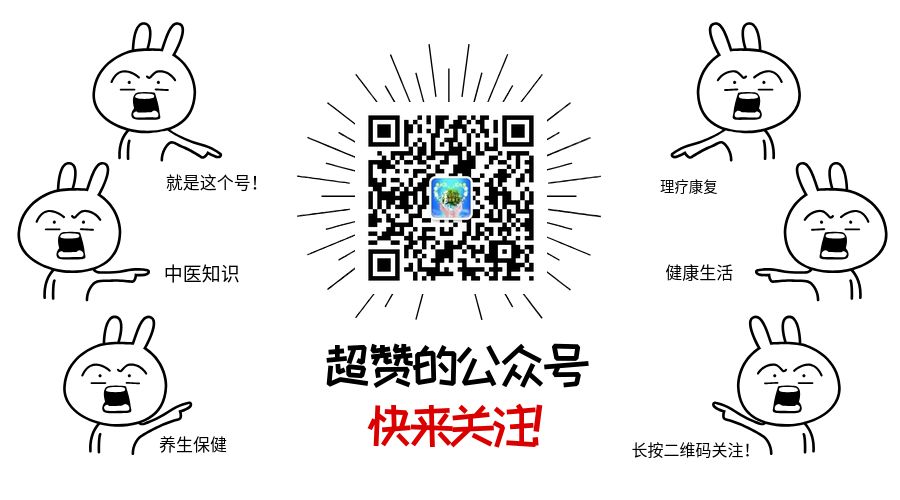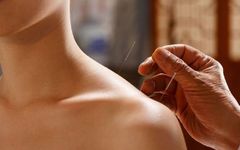
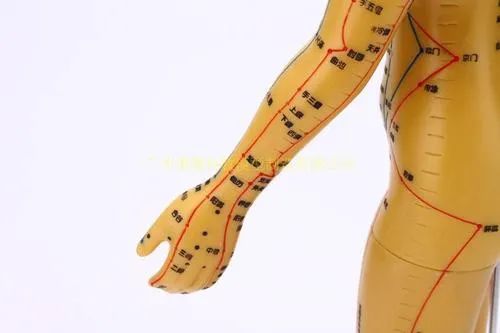
1. Accurate Diagnosis
In clinical practice, acupuncture at a specific point for a certain disease can sometimes be effective and sometimes not. A detailed examination reveals that it all comes down to diagnosis. For example, the acupuncture point Xiaxi (Gallbladder 43) is renowned for treating dizziness; it is effective for dizziness caused by liver yang rising but less effective or ineffective for dizziness due to blood deficiency or phlegm dampness. A simple toothache, if not carefully diagnosed, may fail with just Hegu (Large Intestine 4) and Neiting (Stomach 44). For lower tooth pain caused by gingivitis or pulpitis, if points on the spleen or kidney meridians are not selected, merely needling Hegu will not suffice. Thus, selecting points based on empirical formulas is merely one method and should not be misused. Only through accurate diagnosis can treatment efficacy be improved. The essence of acupuncture lies in diagnosis-based treatment. Ideal treatment outcomes stem from clear diagnoses. In clinical practice, point selection must adhere to treatment principles. Establishing treatment principles cannot be separated from the theoretical guidance of diagnosis-based treatment. Therefore, mastering and applying diagnosis-based treatment correctly is key to acupuncture therapy. In the process of diagnosis, one must first address the relationship between diagnosis and disease. The two seem to align; if there is a disease, there is a corresponding diagnosis. However, different diseases often present similar symptoms. For instance, although both may involve lower back pain, one may be due to kidney deficiency while another may arise from trauma or wind-cold-dampness. If the diagnosis is unclear, effective treatment methods cannot be proposed. Relying solely on Weizhong (Bladder 40) will not yield satisfactory results. Therefore, both diagnosis and disease must be distinguished. Diagnosis includes both observed signs and internal and external pathogenic factors, as well as the location of the disease. Thus, a comprehensive and specific judgment of the unique nature and primary contradictions of the disease at this stage is necessary. Disease diagnosis involves comparing and differentiating similar diseases based on the findings from diagnosis. This way, one can accurately grasp the essence of the disease, identify and resolve the primary contradictions, and avoid being misled by superficial appearances. Additionally, one must flexibly grasp the relationship between symptoms and their urgency, closely monitor the transformation of symptoms, and provide reliable evidence for treatment.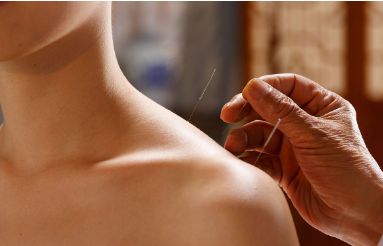
2. Accurate Point Selection
In acupuncture, if the points are not accurately selected, the true essence is not obtained, or if the meridians are deviated, it is difficult to achieve the expected sensation and effect. If the correct acupuncture point is not hit, even the most exquisite point selection and skilled technique will be of no use. Some points can only be accessed using special methods. For example, when locating the Gao Huang (Bladder 43) point, the scapula must be spread out to access the correct point. When locating the Yanglao (Gallbladder 34) point, the hand must be turned towards the chest to access the correct point. For back shu points, if one does not carefully count and palpate the vertebrae, they may not be accurately located; relying solely on visual observation can easily lead to errors. Therefore, it is essential to be familiar with and master the pathways of the meridians and the locations of the acupuncture points, as well as some special methods for locating certain points; this is a fundamental skill for acupuncture practitioners. Additionally, point selection should strive to be concise and precise, avoiding complexity. Necessary points should be used, while unnecessary ones should be omitted. Ideally, one needle should suffice for treatment. However, for difficult cases, it may be necessary to use seven or eight points or more, depending on the condition. Blindly needling without thought can lead to exacerbation of the condition. For instance, in cases of trigeminal neuralgia, random needling at the site can intensify the pain. Improper technique at the Jiaji (Governing Vessel 3) point can worsen sciatica pain. Furthermore, the selection of points on the left and right sides, whether to use bilateral or unilateral points, and whether to select points on the healthy or affected side must all be accurate and appropriate for effectiveness. When selecting points on the left and right sides, it is crucial to choose the points that most easily restore relative balance to the meridians based on the imbalances presented by the disease. For example, if there is pain in the right leg and the examination reveals that the right Shaoyang (Gallbladder) meridian is in excess while the left side is deficient, then when selecting Yanglingquan (Gallbladder 34), if using a tonifying method, one may select the left Yanglingquan; if using a draining method, one may select the right Yanglingquan. If using bilateral points, one may tonify the left and drain the right. In complex cases where multiple meridians are affected, or false symptoms or similar symptoms arise from different meridians, one must not hastily select points based on the disease. Careful examination of the meridians and diagnosis must be conducted to provide a basis for point selection.
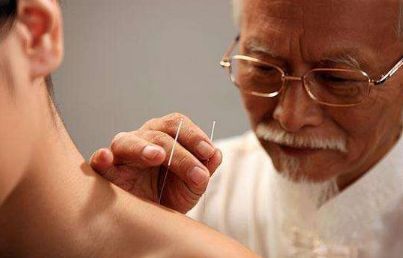
3. Mastery of Techniques
When needling, it is essential to apply the correct tonifying and draining techniques to adjust the balance of yin and yang, qi and blood, and the deficiency and excess of the meridians to achieve therapeutic goals. If the techniques are unclear, the tonifying and draining methods will be indistinct, making it difficult to achieve good results. Achieving sensation under the needle is a primary condition for applying tonifying and draining techniques. If sensation is not achieved under the needle, the technique cannot be applied, and the cause must be investigated. If it is due to inaccurate point selection, the direction, angle, and depth of needling must be corrected promptly; if it is due to the patient’s constitution or condition, one may use manual stimulation along the meridian to promote qi. Some patients may not respond sensitively to the sensation of the needle; in such cases, the practitioner must rely on the tactile feedback from the needle to perceive the situation under the needle. If the needle feels tight and sinking, it indicates that sensation has been achieved. During the procedure, the practitioner must concentrate, mastering the timing of needling, the sensation, the amount of stimulation, and the patient’s response; one must not act hastily or mechanically perform useless techniques.
4. Flexible Application
In clinical practice, point selection should be flexible and adaptable, adjusting combinations as needed. For example, for stomach pain, the prescription may include Zhongwan (Ren 12), Zusanli (Stomach 36), and Neiguan (Pericardium 6). When pain radiates to the lower abdomen and chest, liver meridian points should be selected; if there is distension, poor appetite, or indigestion, spleen meridian points should be selected. Adjusting points according to the disease mechanism is significantly more effective than rigidly adhering to the main points. Empirical formulas should not be mechanically applied; they must align with both diagnosis and disease mechanism. For instance, Renying (Stomach 9), Taichong (Liver 3), and Hegu (Large Intestine 4) are excellent for treating dizziness due to liver yang rising, but they may not be effective for dizziness due to kidney yin deficiency or phlegm dampness. Even if symptoms are temporarily alleviated, the effect may be short-lived. Additionally, the number of points selected, the order of application, and the intensity of stimulation must be carefully considered to maximize therapeutic effects. Before and after each treatment, the practitioner should meticulously examine changes in meridian imbalances to provide reliable evidence for treatment. This is an essential aspect of improving efficacy.
5. Indications for Treatment
While acupuncture is widely applicable, it has its indications. Blindly needling without regard for contraindications not only fails to realize the therapeutic effects of acupuncture but also damages its credibility and true value. The selection of indications is the foundation for achieving efficacy. The degree of efficacy varies with the type and severity of the disease. Acupuncture is suitable for functional disorders. It also has certain efficacy for some organic diseases, such as optic nerve atrophy and sequelae of poliomyelitis. It can be effective for chronic inflammation and infectious diseases such as bacillary dysentery, whooping cough, and hepatitis; and for parasitic diseases such as malaria and ascariasis. Contraindications include severe organic lesions, malignant skin diseases, hemophilia, septicemia, significant blood loss or anaphylactic shock, acute peritonitis, gangrene, and malignant febrile diseases. However, in cases where treatment is necessary or possible, acupuncture may still be used as a holistic therapy or adjunctive treatment. For example, in cases of qi and blood deficiency without complete exhaustion of body fluids, moxibustion may still yield certain effects.
6. Importance of Consistency
“How many times of acupuncture are needed to heal? Can it be cured? If cured, can it recur?” Patients often ask such questions in clinical practice. Providing an accurate answer is indeed challenging. If one does not comprehensively grasp the relationship between the positive and negative factors, the patient’s internal and external conditions, and the appropriate treatment methods, it becomes even more difficult for the practitioner to respond. Achieving therapeutic effects requires diligent effort from both the practitioner and the patient. Especially in the treatment of difficult and chronic diseases, one cannot expect immediate results. Consistency is key. Acupuncture treatment aims to adjust and stimulate the body’s resistance to disease. The generation or enhancement of this resistance requires time and conditions. Therefore, both the practitioner and the patient must create favorable conditions for stimulating this resistance. Effective stimulation leads to good results, while ineffective stimulation results in poor outcomes. Practitioners must refine their techniques and be dedicated to their patients. Patients must closely cooperate, follow medical advice, accept treatment, and enhance their physical fitness. Treatment should not be halted due to temporary ineffectiveness.
————Further Reading————

Note: The various prescriptions and empirical formulas mentioned in this article are for reference and study by professional TCM practitioners only and should not be used as prescriptions. Please do not use them blindly; this platform does not bear any responsibility for any consequences arising from such use!
Copyright Statement: We emphasize sharing; the articles and images come from the internet, and the copyright belongs to the original authors. If there are any objections, please inform the editor, and we will delete them promptly.
FollowTherapeutic Encyclopedia↑↑↑, reply or directly click the keywords below to automatically query the corresponding knowledge and treatment methods for common diseases.

Nine Major Constitutions in TCM: Yang Deficiency, Yin Deficiency, Phlegm-Dampness, Qi Stagnation, Qi Deficiency, Blood Stasis, Damp-Heat, Special Constitution, Harmonious Constitution
Five Zang and Six Fu: Liver, Heart, Spleen, Lung, Kidney, Six Fu: (Gallbladder, Small Intestine, Stomach, Large Intestine, Bladder, Sanjiao)
Diagnosis: Pulse Diagnosis, Physical Examination, Sweat Diagnosis, Eye Diagnosis, Nail Diagnosis, Facial Diagnosis, Hand Diagnosis, Blue Vein Diagnosis, Buttock Diagnosis, Rash Diagnosis, Chest Diagnosis, Leg Diagnosis, Cupping Diagnosis, Back Diagnosis
Beauty and Body Shaping: Breast Enhancement, Chloasma, Acne, Gua Sha, Twelve Meridians, Lymphatic Detox, Weight Loss, Abdominal Protrusion, White Hair, Weight Loss
Sub-Health Dietary Supplements: Si Wu Decoction, Si Shen Decoction, Si Jun Zi Decoction, Food that Affects Health, Spleen Tonification, Lung Moistening, Heart Nourishing, Kidney Regulating, Liver Protecting
Sexual Health Issues: Impotence, Prostatitis, Premature Ejaculation, Benign Prostatic Hyperplasia, Nocturnal Emission, Phimosis, Menopause, Breast Hyperplasia, Cold Uterus, Breast Cancer, Ovarian Cysts, Cervicitis, Amenorrhea, Gynecology, Abnormal Vaginal Discharge, Postpartum Care, Menstrual Maintenance, Pelvic Inflammation, Fibroadenoma, Infertility, Irregular Menstruation, Endocrine Disorders
Children’s Knowledge: Infant Knowledge, Pediatric Tuina, Pediatric Diarrhea, Pediatric Fever, Pediatric Hernia, Baby Night Crying
Eye Diseases: Glaucoma, Myopia, Conjunctivitis, Hyperopia, Cataracts, Floaters, Styes
ENT Disorders: Deafness, Tinnitus, Oral Ulcers, Halitosis, Toothache, Cough, Pharyngitis, Rhinitis, Otitis Media, Sinusitis, Nasal Congestion
Cardiovascular and Cerebrovascular Diseases: Hypertension, Hyperlipidemia, Diabetes, Coronary Heart Disease, Myocardial Infarction, Stroke, Varicose Veins, Gout, Hypotension, Cerebral Thrombosis, Arrhythmia, Angina Pectoris, Cerebral Hemorrhage, Myocardial Ischemia, Anemia
Bone and Joint Diseases: Cervical Spondylosis, Synovitis, Arthritis, Shoulder Periarthritis, Tendonitis, Meniscus Injury, Lumbar Muscle Strain, Low Back Pain, Lumbar Disc Herniation, Osteophyte Formation, Knee Joint Effusion, Tennis Elbow, Dowager’s Hump, Osteoporosis, Heel Pain, Avascular Necrosis of the Femoral Head, Tendonitis
Neurological Diseases: Sciatica, Alzheimer’s Disease, Trigeminal Neuralgia, Neurasthenia, Muscle Atrophy, Parkinson’s Disease
Common Diseases: Cold, Fever, Headache, Constipation, Hemorrhoids, Appendicitis, Cold Hands and Feet, Frostbite, Gastritis, Stomach, Duodenal Ulcer, Gastroptosis, Insomnia, Fatty Liver, Spleen and Stomach Deficiency and Cold, Kidney Stones, Gallstones, Lipomas, Muscle Atrophy, Eczema, Dampness Removal, Bronchitis, Renal Cysts, Uremia, Acupuncture for Smoking Cessation, High Uric Acid, Kidney Deficiency, Dampness, Excess Heat, 221 Types of Skin Disease Atlas, Rheumatism, Liver Fire Excess
Sharing is a joy; move your fingers to let more people gain health and happiness.
Long press the following QR code to followTherapeutic Encyclopedia, and learn more about TCM health knowledge.
